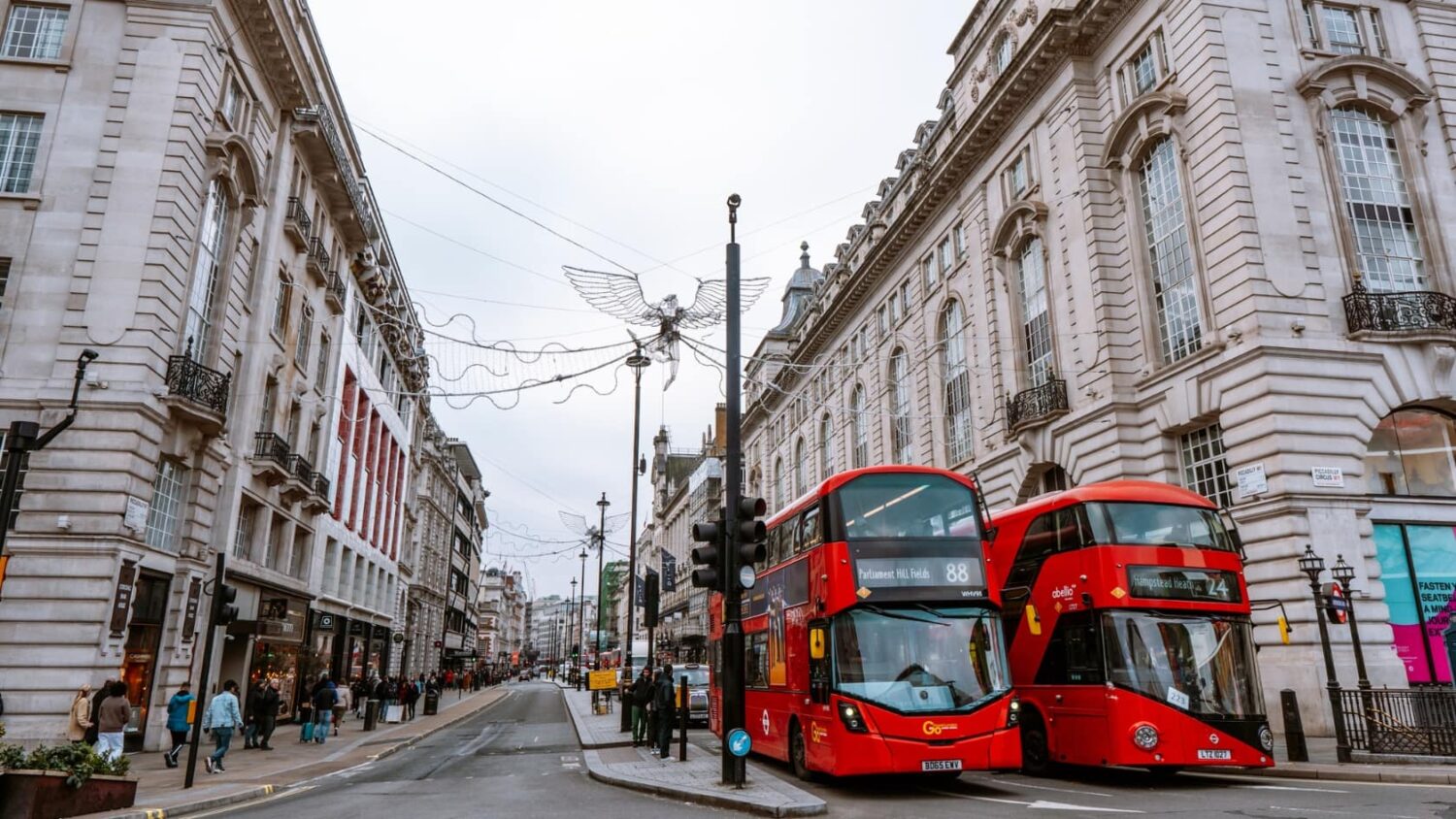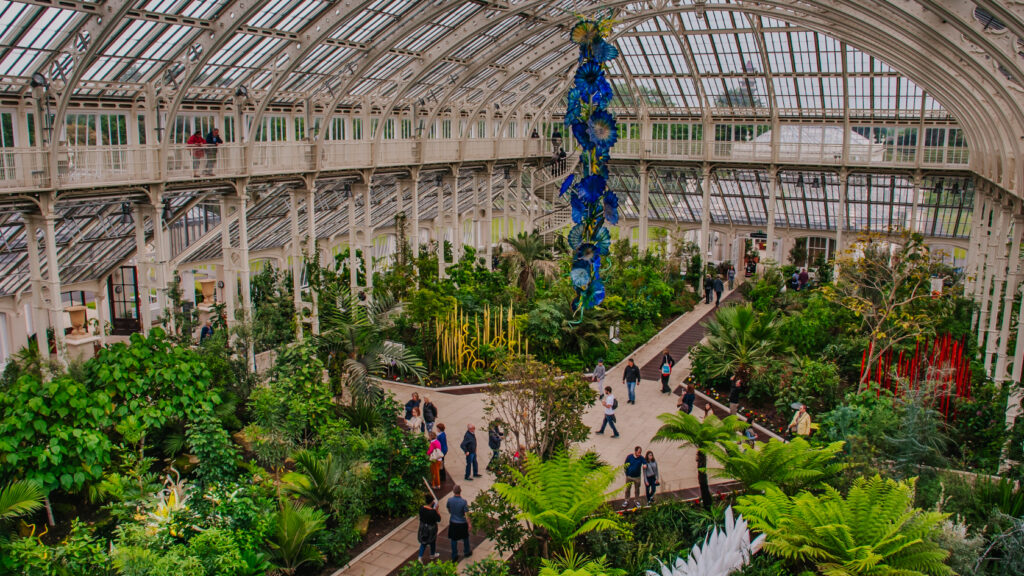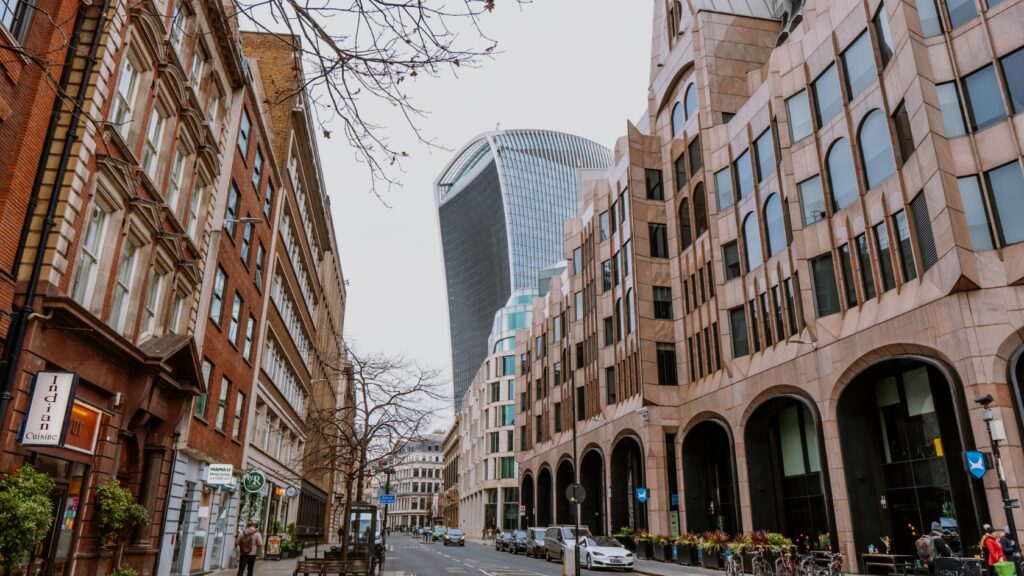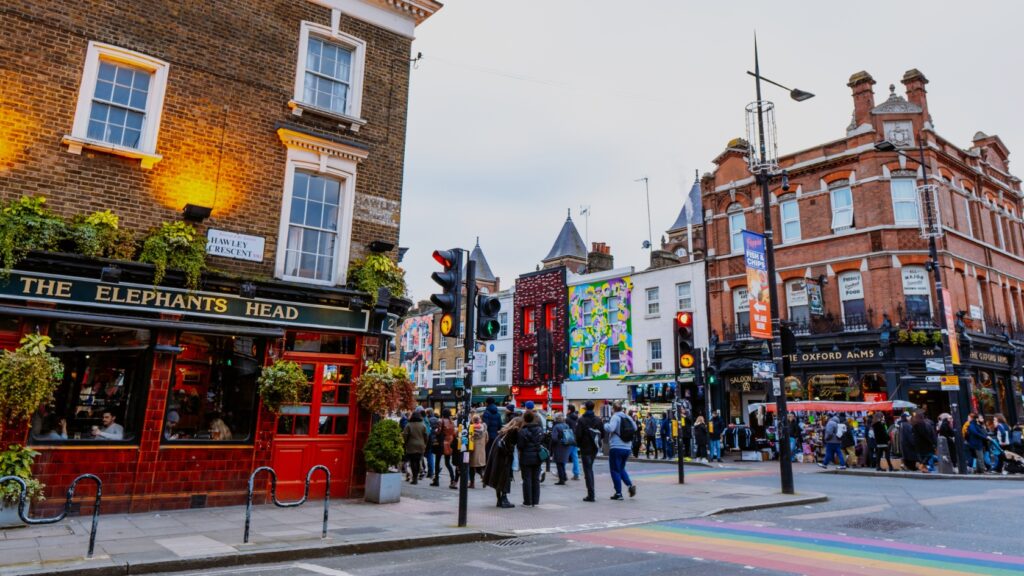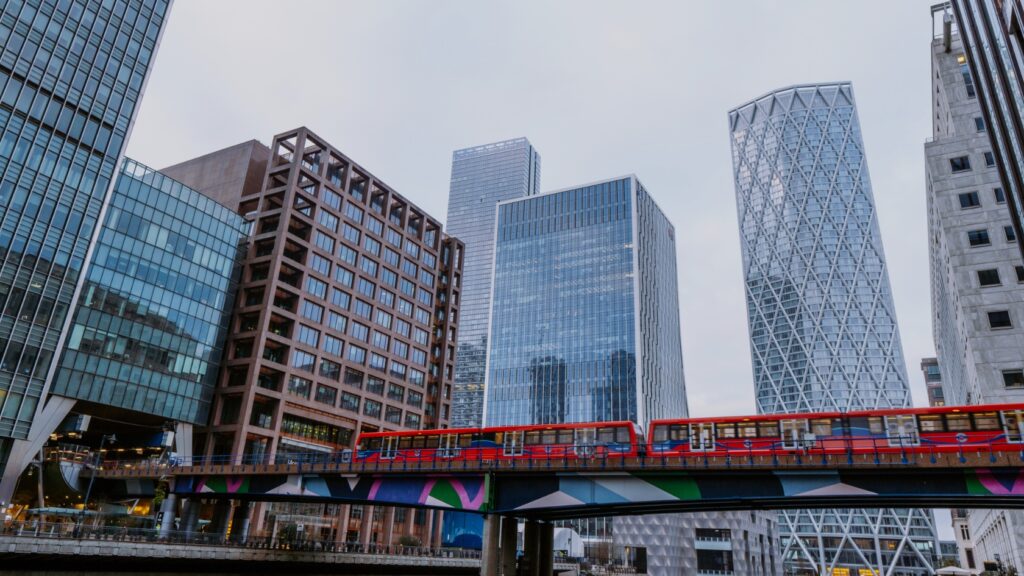London, the most popular city in Europe. Almost all of us want to visit it, but transport here can sometimes be quite difficult for visitors. Today we’ll show you where to find flights, how to get from the airport to central London, how public transport works in London and how to travel around London with kids.
Transport to London
Flights to London
Return tickets to London can be found from as little as €25 – from Nuremberg, Dresden, Leipzig, Wroclaw, Prague or Frankfurt. You’ll find the lowest prices from November to early spring (except at Christmas or around Valentine’s Day).
London has good and frequent connections to most major European cities, including Vienna, Berlin, Munich, Bucharest and Budapest.
The following airlines fly most frequently from Prague to London:
- British Airways – the traditional British route connects Prague with Heathrow Airport, which is easily accessible to the city centre by tube or train.
- EasyJet and Wizz Air – low-cost airlines connecting Prague with Gatwick and Luton airports. In both cases, you can reach London by express train in half an hour or National Express buses in an hour.
- Ryanair – a well-known low-cost airline that operates on the Prague-Stansted route, which is the furthest from London. Yet you’re in London in 30 minutes by train or 55 minutes by bus.
☞ Here you can find all flights to London.
With low-cost airlines such as Ryanair, EasyJet and Wizz Air you only have a small backpack in the basic ticket price (usually a backpack volume of up to about 30 litres will do). If you’re travelling with larger luggage, add a carry-on bag when you buy your ticket – all airlines enforce the limit. You would have to pay an additional fee for hand luggage on the spot, which is significantly higher than when you book online.
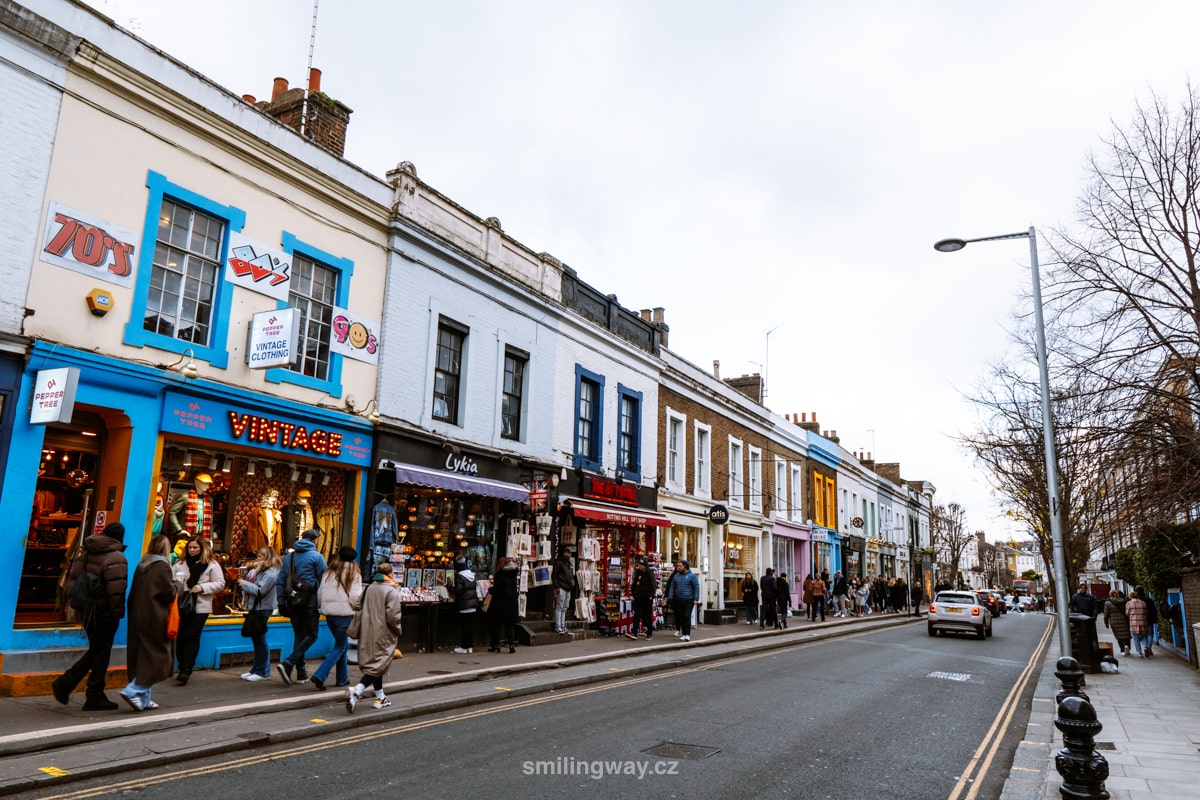
London Airport
You’ve booked your flights and now you need to book transport from the airport to the centre of London.
Most of the airports are outside of London and cannot be reached by London public transport. This does not only apply to Heathrow, which is connected to London’s services.
If you’re flying into London, you’ll probably arrive at one of these airports:
- London Stansted
- London Luton
- London Gatwick
- London Heathrow
All airports are well signposted. On arrival, just follow the graphic signs and descriptions for the trains (train) or buses (coach). Just bear in mind that you will have to clear passport control upon arrival, which can sometimes be prolonged. If you’re in a hurry, you can add Fast Track, where you go through security in the fast lane (each airport has information on its website).
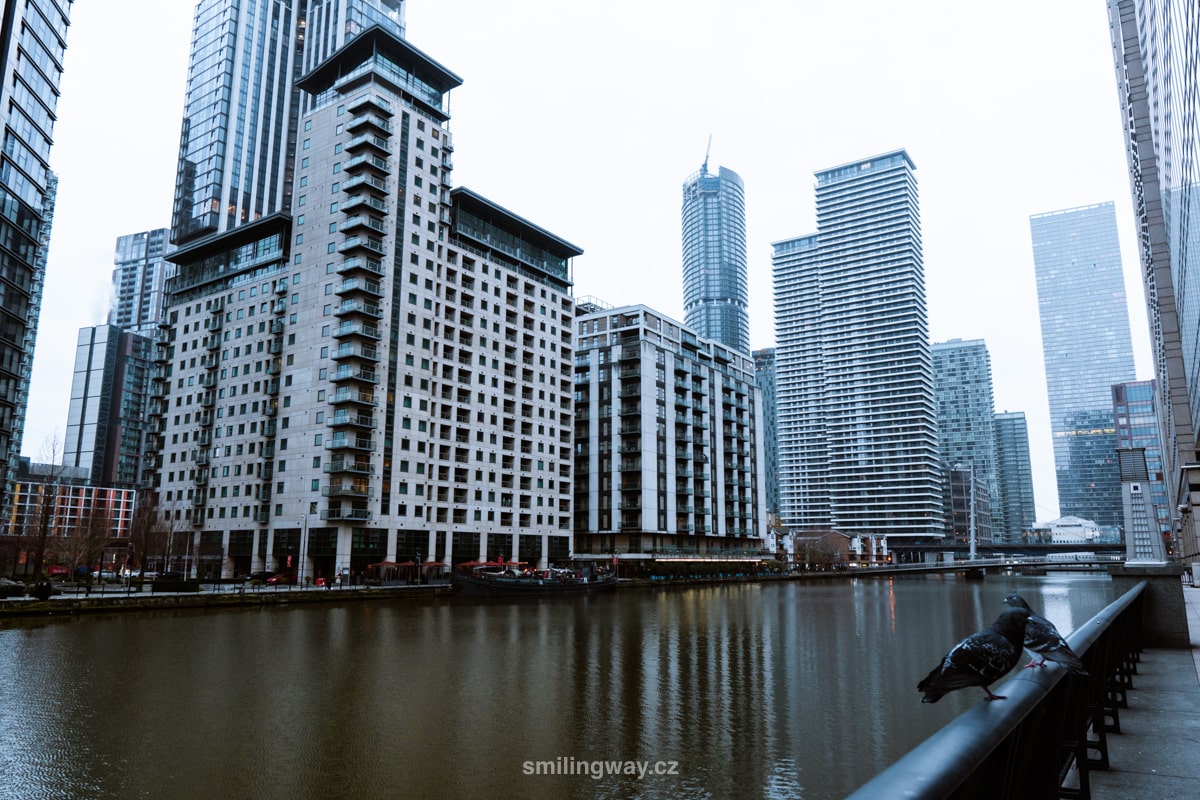
Now we’ll take a look at how to get to central London from each airport:
How do I get from Stansted Airport to central London?
We start with Stansted Airport, operated by low-cost airline Ryanair. Stansted Airport is 40 miles north-east of London. It is the fourth largest airport in London and the third busiest.
Central London is accessible by bus and train:
Stansted Airport trains – Tottenham Hale – Liverpool Street Station
With Stansted Express trains, you can be in London at Liverpool Street in 48 minutes. A one-way ticket will cost you £21,90. Trains run every 15 minutes from early morning until midnight. You can find timetables here.
The first train stop is at Tottenham Hale Station, where you can change to the Underground to get to King’s Cross, Oxford Street or Victoria Station. At Tottenham Hale, you can also change to the Stansted Express to Stratford (the Tottenham Hale-Stratford route is still included in your ticket price – you don’t need to buy a new one).
If you don’t change and keep going, the next stop is Liverpool Street Station, one of London’s main stations, which is convenient for getting around the city.
☞ If you are looking for hotel near Liverpool Street Station, ibis London City Shoreditch is a great choice. The hotel is modern, clean, with great accessibility and plenty of restaurants and shops nearby.
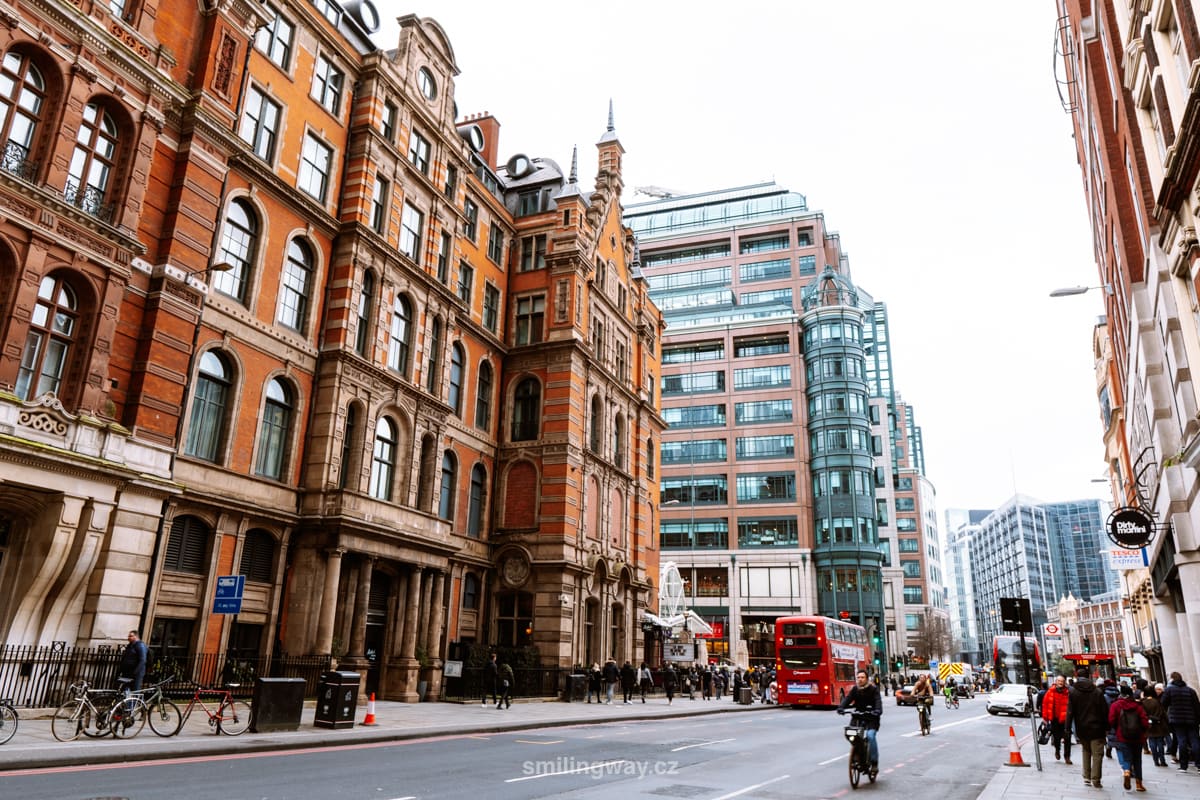
National Express buses
National Express buses are a cheaper but longer alternative to trains. On the other hand, it runs continuously day and night – unlike the Stansted Express, which has a night break.
At night you can expect at least 2 connections per hour, during the day 4 connections per hour. Please check availability – some times may sell out in advance.
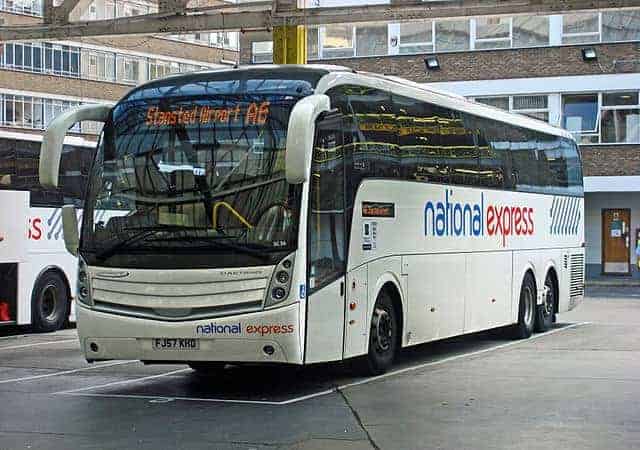
National Express operates several routes that stop in London at various locations. Most connections are from Stansted Airport with Liverpool Street Station in central London or Stratford Station, which offers great accessibility and a quiet location.
☞ If you are arriving or departing late or early in the morning, I recommend choosing hotel in Stratford (unless you choose a hotel at the airport). It has the best connection to the airport at night (there are no connections to the centre at night).
Accommodation here is also more affordable, and yet you have excellent connections to the centre. This is the best hotel in Stratford:
- Hotel Holiday Inn Express – one of the best hotels in London, clean and practical rooms, excellent connections to the city centre and airport (especially Stansted and Heathrow), quiet location
- Hotel DC – A smaller, cosy hotel at an unbeatable price in the quiet Stratford area, with easy access to the city centre and airport by tube, train and bus
Hotels near Stansted Airport
If you’re arriving late or leaving early, these hotels are located right by the airport – you don’t need a private transfer or bus, and they’re good value for money.
How do I get from Luton Airport to central London?
Like Stansted, Luton Airport is mainly used by low-cost airlines such as EasyJet and Wizz Air. Luton is 35 miles north-west of London.
Central London is accessible by bus and train:
Luton Airport – St Pancras International trains
Luton Express trains run every 30 minutes from early morning until midnight. The journey takes 22 minutes from Luton Airport Parkway Station to St Pancras International Station, one of London’s main stations, which is served by several tube lines. Tickets are sold through trainline.com and prices are around £15 (cheaper on site).
Luton Airport Parkway Station is not directly adjacent to the airport – you can take the DART train from the airport (4 minutes, £4.90), or you can take the DART train from the airport (4 minutes, £4.90). walk to the bus stop (30 minutes).
National Express and Green Line buses
Luton Airport to Central London is operated by National Express and Green Line.
- National Express buses connect Luton Airport to several places in London – you can get off at Golders Green on the edge of London in 50 minutes and change to the tube there, or go to Marble Arch in the city centre (1hr 25 mins). The ticket will cost £12 in one direction and buses run every 25 minutes during the day.
At night, it runs at least once an hour, and in addition to Victoria and Golders Green stations, it also stops at Paddington Station (you can choose your destination).
- Green Line buses (line 757) connect Luton Airport to Victoria Station in the city centre, which can be reached in 1 hour and 25 minutes (allow extra time at peak times). The ticket will cost £11,50, but buses run less frequently – during the day about once every 30 minutes + about 3 services at night. When you buy online, you will see the current times and schedules.
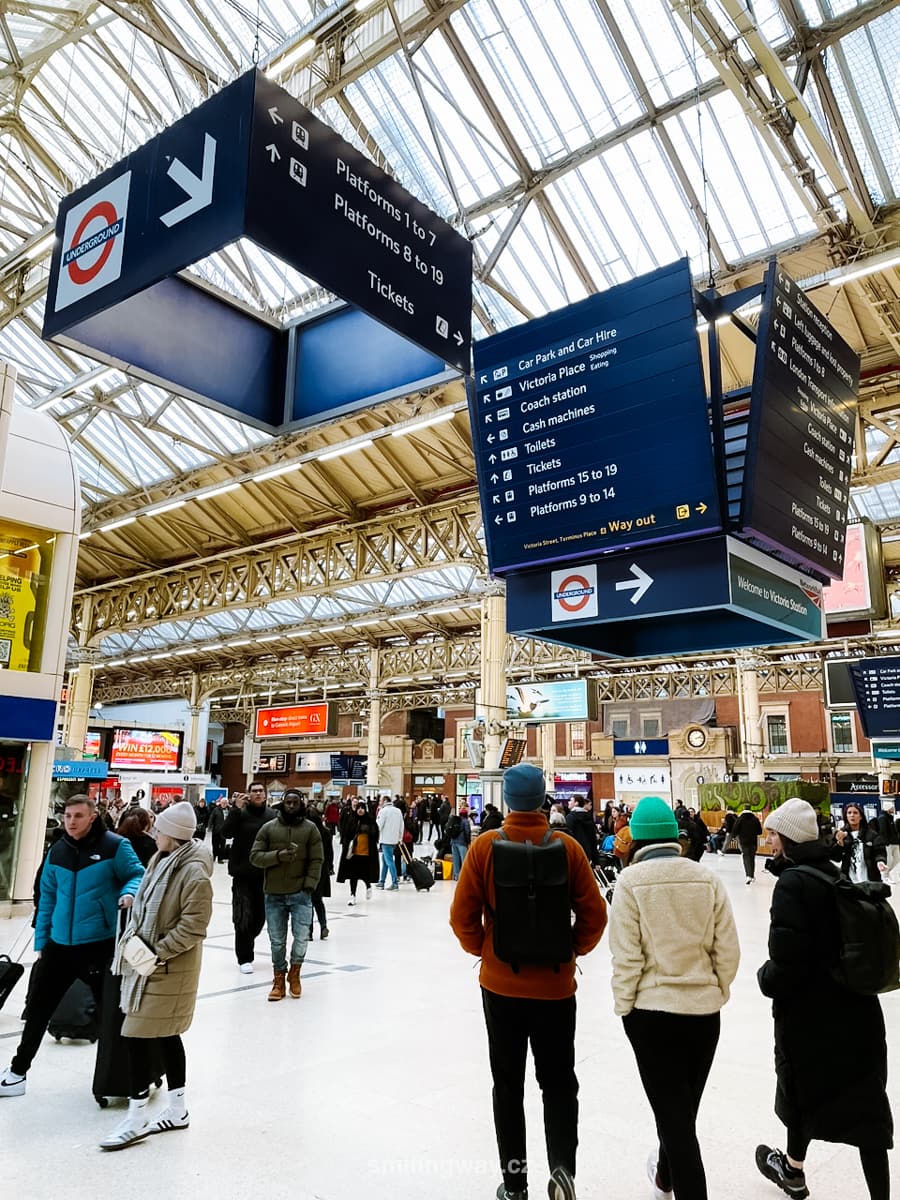
Accommodation near Luton Airport
If you are arriving late or leaving early, these hotels are just a short walk from the airport:
How do I get from Gatwick Airport to central London?
Gatwick Airport is located 29 miles south of London. It is the second busiest airport in London. It has two terminals, North and South, which are connected by a free train service.
Gatwick is served by EasyJet and Wizz Air (as well as Luton) – you’ll probably arrive in the North Terminal with EasyJet, and in the South Terminal with Wizz Air.
Central London is accessible by bus and train:
Gatwick Airport – Victoria Station trains
The Gatwick Express takes you to central London’s Victoria Station in 35 minutes. Services are frequent and regular – every 20-30 minutes from early morning to midnight.
A one-way ticket costs from £ 19,50. You can buy your ticket online or on the spot using your Oyster card or contactless card. There’s always someone to help you navigate.
Trains depart from South Terminal. If you arrive at Terminal North, just follow the signs to Terminal South (or vice versa). This will take you to the airport train, which will take you to the second terminal in 3 minutes for free. It runs continuously every few minutes.
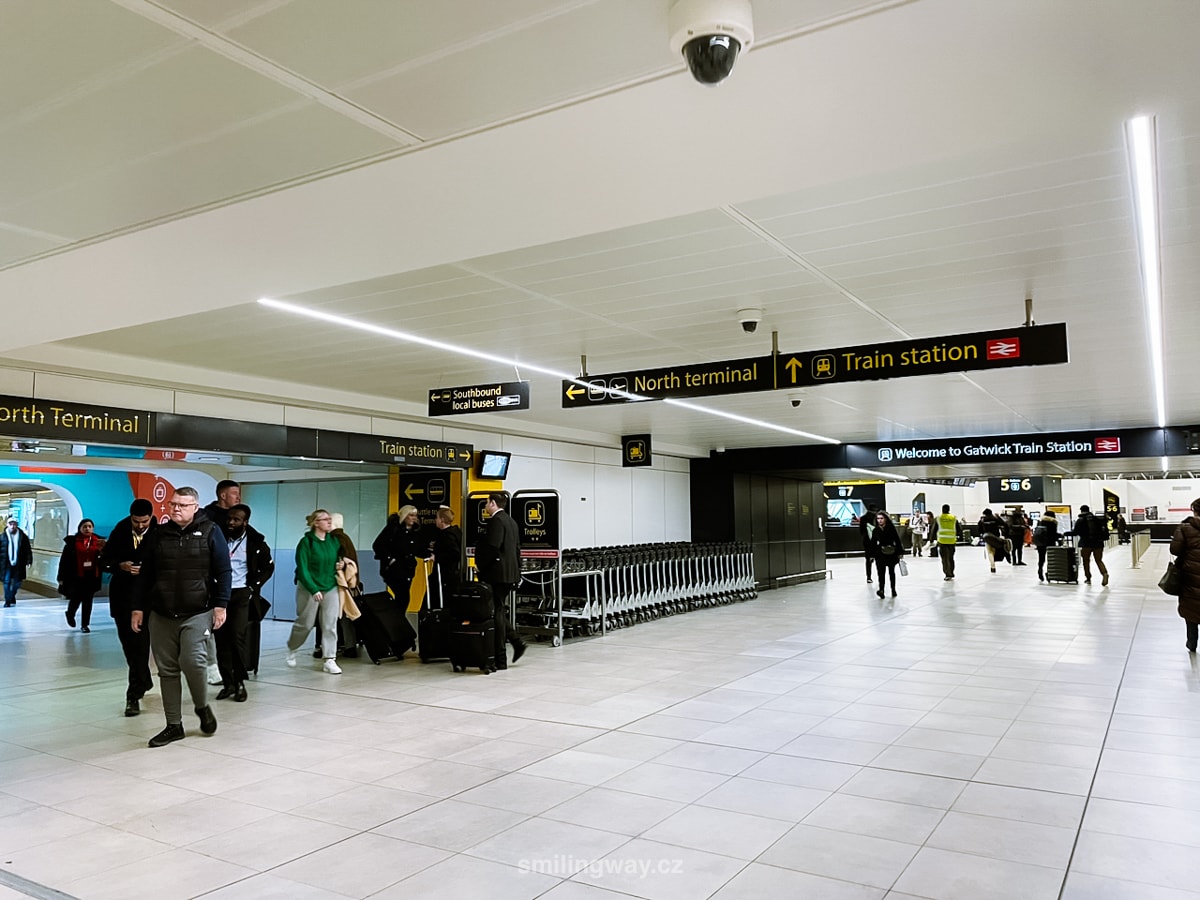
Gatwick Airport buses – Victoria Station
If you prefer buses, you can use National Express again from Gatwick Airport. He is building at both Terminal South and Terminal North.
Buses run approximately once an hour (including some night services) and it takes 2.5 hours to get to central London Victoria Station. The advantage is the price – for a one-way trip you pay £ 10,50.
How do I get from Heathrow Airport to central London?
Heathrow is the closest of these airports. It is also the largest airport in Europe with 5 terminals. I have attached a map for easy orientation. British Airways flies here from Prague – you will most likely arrive at Terminal 3.
Central London is accessible by train, tube and bus:
Elizabeth line trains
The Elizabeth line is one of the best ways to get from Heathrow Airport to central London. It connects all terminals and then stops at several stations across London – Paddington Station, Bond Street, Liverpool Street, Canary Wharf, Stratford and more. The individual stops can be found here.
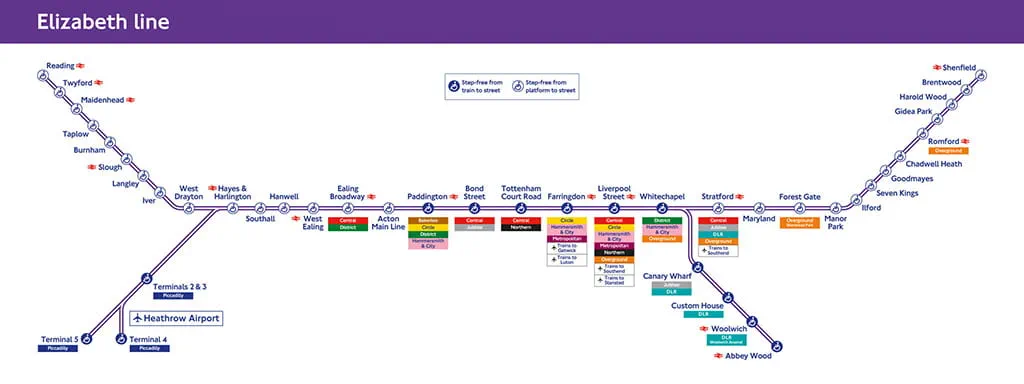
Heathrow Airport is in zone 5 – Elizabeth line prices are based on £ 12.20 and you can simply pay with a contactless or Oyster card.
It takes almost twice as long to get to central London than the Tube. The Elizabeth line operates from early morning to midnight and runs every few minutes.
At the airport, follow the signs for the trains, not the metro. The Elizabeth line is not part of the London Underground. The station is the same as for the Heathrow Express – follow the electric board to see which line is the Elizabeth line and which is the Heathrow Express.
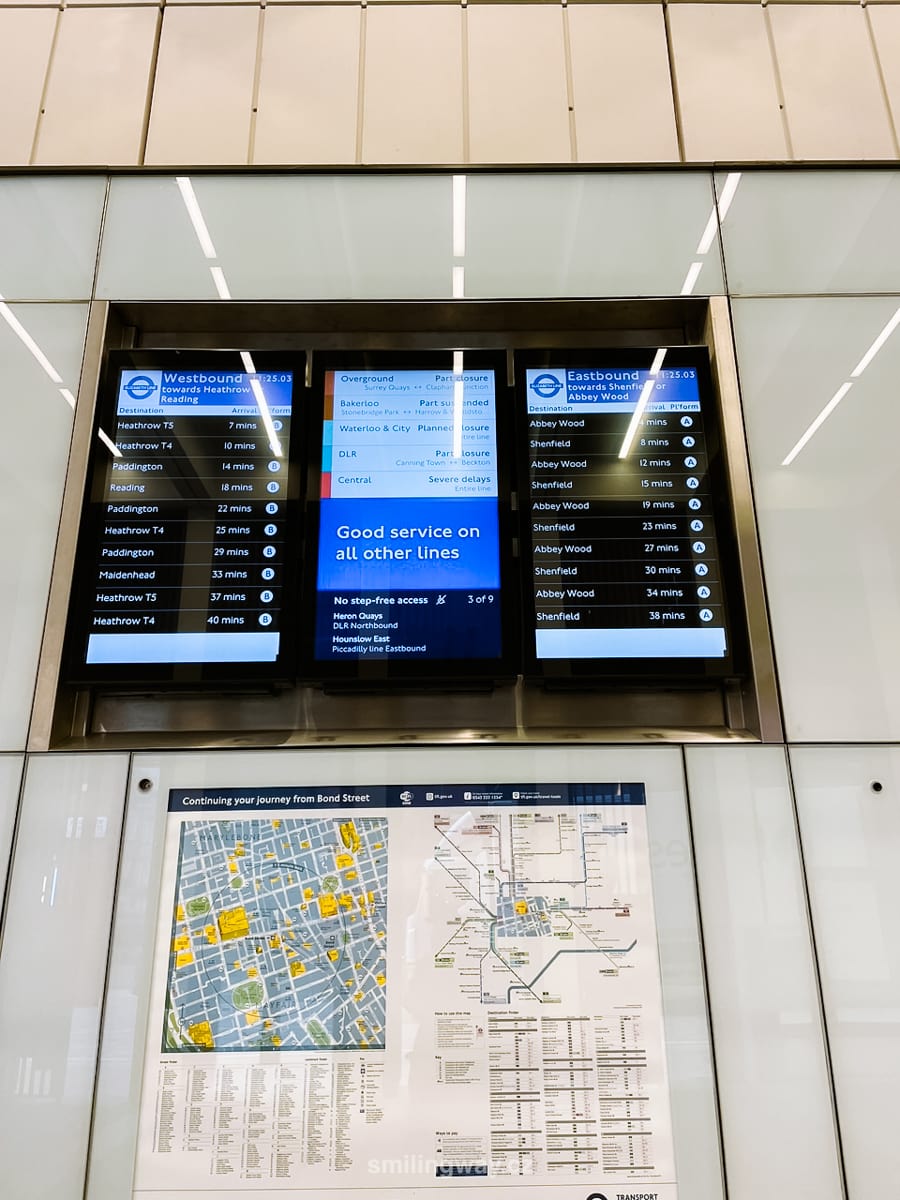
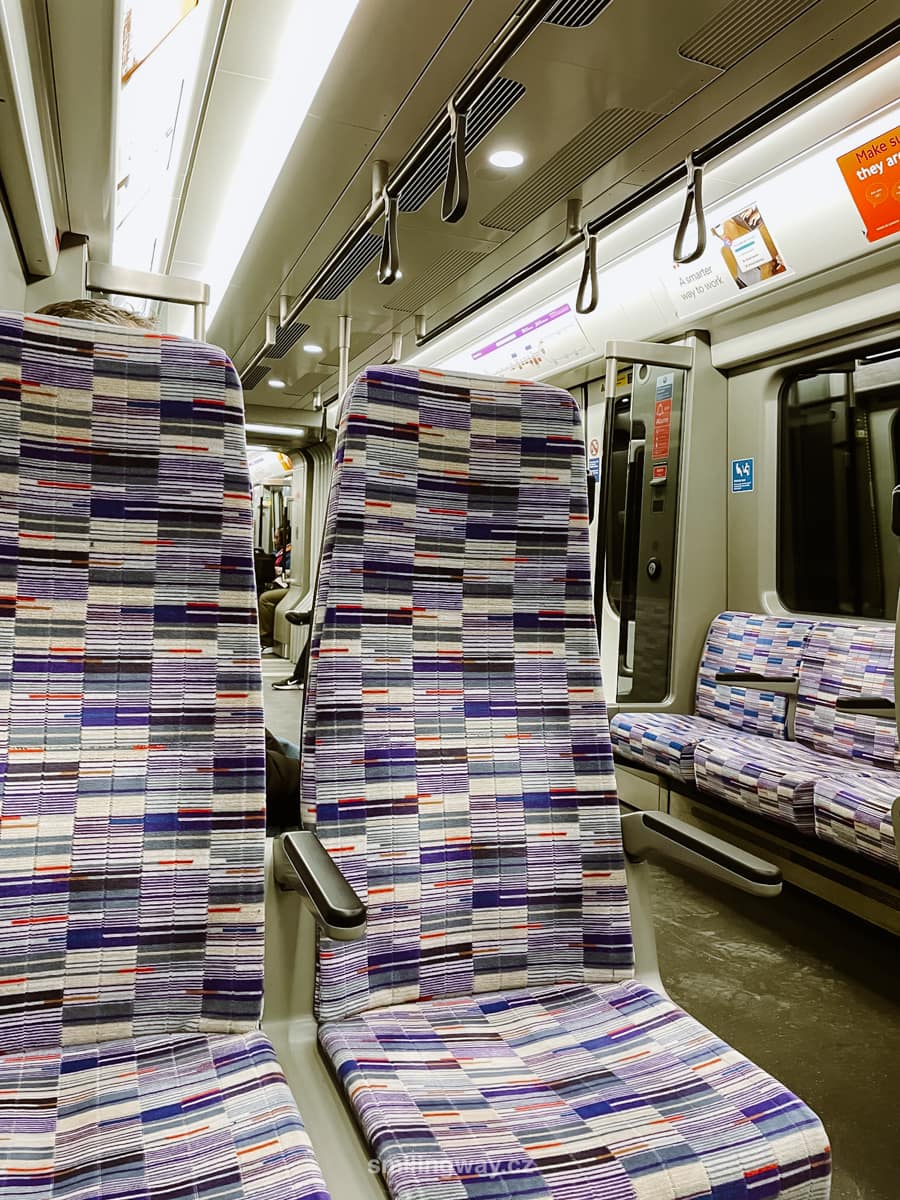
Heathrow Express trains
If you’re looking for the quickest way to get to London, the Heathrow Express is the best option – 15 minutes from the airport to Paddington Station in the city centre, where you can change to the Tube. Trains run every 15 minutes, connecting central London with Terminals 2, 3 and 5.
But they are the most expensive in terms of price – you pay for one ride £ 25, but if you book far enough in advance, tickets will work out cheaper. Children up to 15 years of age travel free of charge. You can order your tickets online or pay on the spot with an Oyster/contactless card.
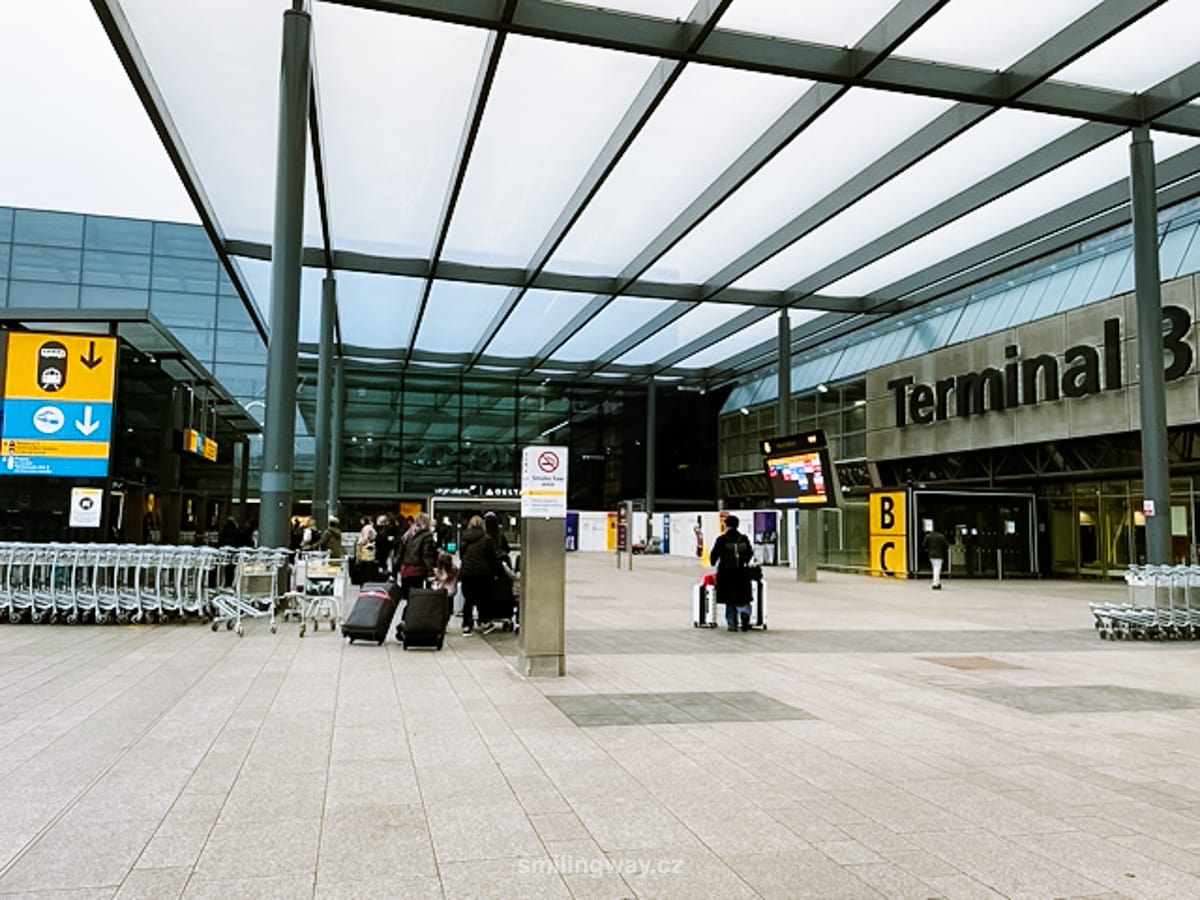
Tube – Paddington line
Another option is the Tube, as the Paddington line runs through Heathrow from the city centre. It stops at all terminals and operates from early morning until midnight (it runs continuously on Fridays and Saturdays, but does not stop at Terminal 4 at night).
Calculate the time about an hour to the center and the price £ 5.60 per ride. You can pay with an Oyster/contactless card. At the airport, follow the signs for the trains first and then for the metro.
National Express buses are another option, but they’re as time efficient as the subway, and less expensive.
For night services to the airport, the N9 night buses run from central London to Terminal 5 every 30 minutes throughout the night.
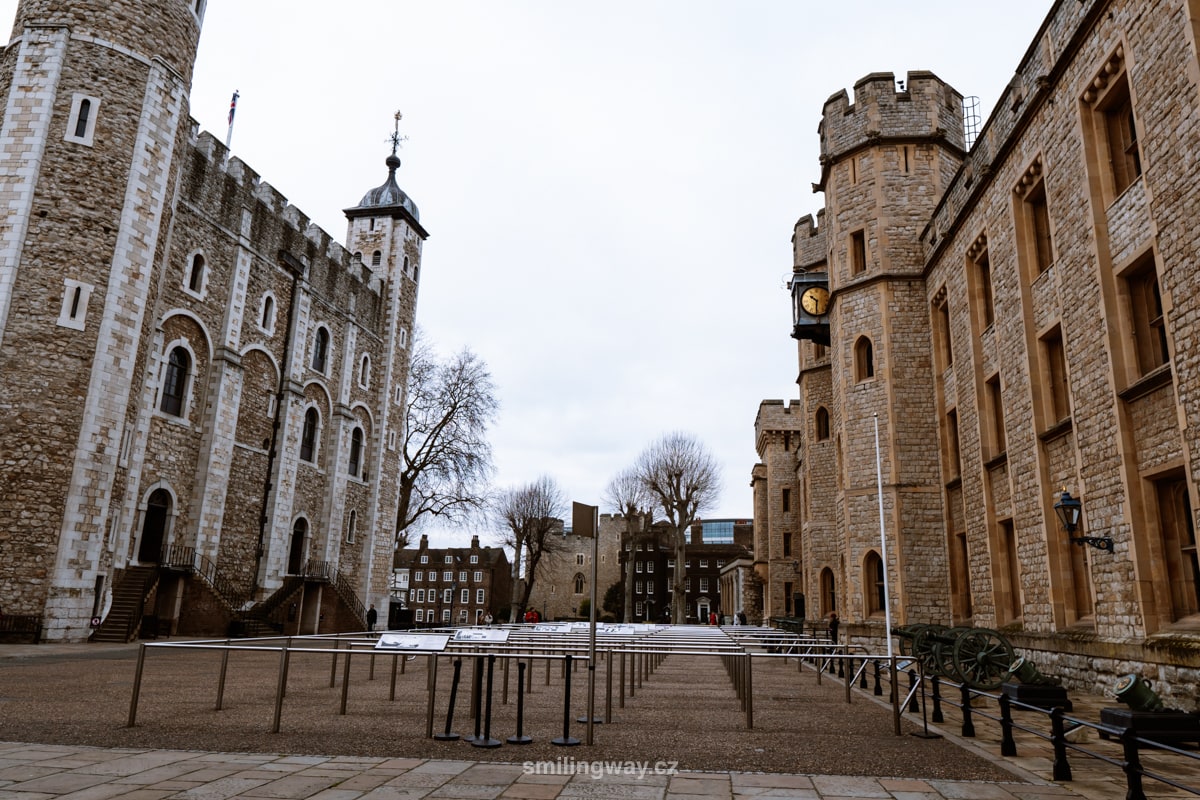
Transport and metro in London
Transport in London is great. It may seem complicated at first, but once you’ve taken a few rides, you’ll see that it’s easy.
London’s public transport includes:
Underground: The London Underground, known as the Tube, is the backbone of the city’s transport network. It is one of the oldest and most extensive underground systems in the world, covering central London and many suburbs. It is divided into zones (1 to 9), with fares varying according to the number of zones you pass through.
Buses: London’s iconic red buses form an extensive network covering the whole city. They run on many routes and are particularly useful for short journeys or areas where the metro does not run. Night buses run on the main routes after the metro closure.
Trams: Trams, which run mainly in South London, are a convenient mode of transport in areas that are not served to the same extent by the Tube or buses.
Docklands Light Railway (DLR): The DLR is an automated light metro system serving mainly east London and the Docklands area (Canary Wharf, Greenwich).
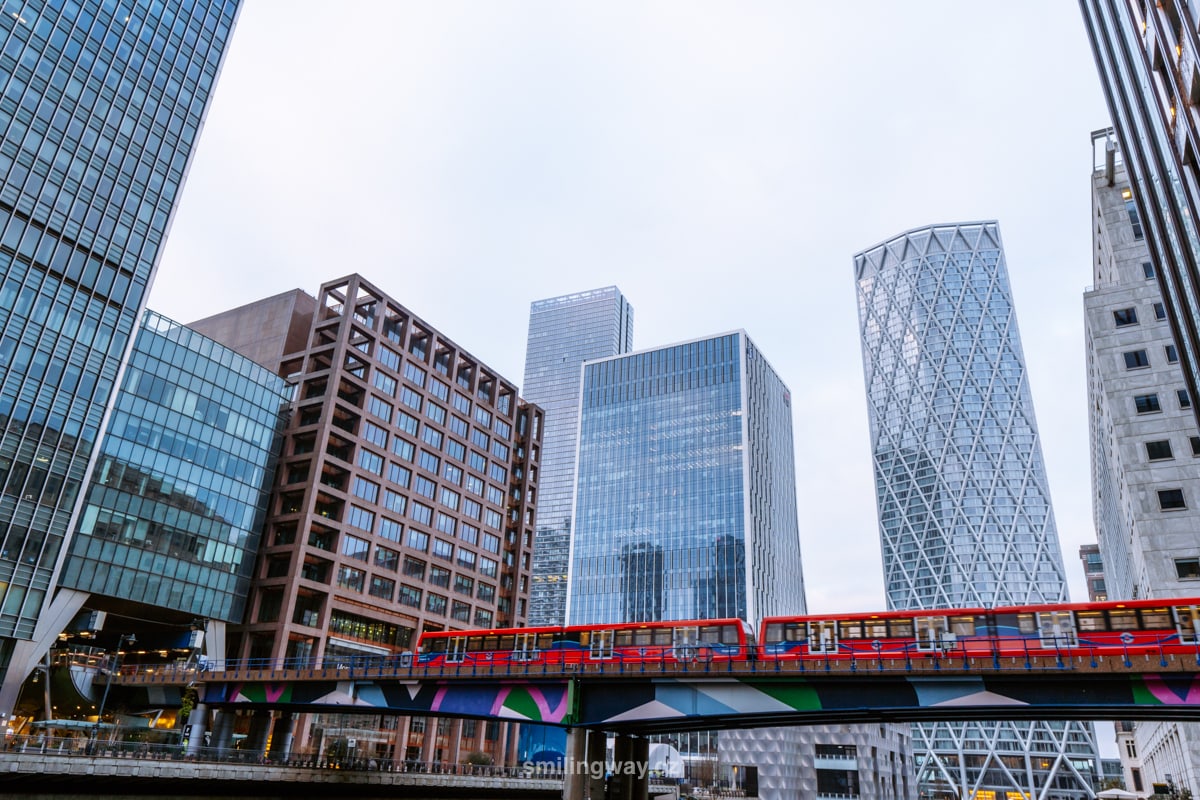
London Overground: The Overground network, which complements the Tube, connects areas outside the central zones and provides links to the suburbs.
National Rail: Although technically part of the city’s transport network, National Rail services are essential for commuting into London from surrounding areas and for intercity travel.
River transport: The River Thames is not only a picturesque backdrop but also a means of transport. River buses and cruise ships run along the Thames, offering both regular commuter and leisure cruises.
Taxis: The famous black taxis can be hailed on the street or pre-booked. London also has Uber and Bolt.
IFS Cable Car: A cable car with views of Greenwich and Canary Wharf, with a fare of £6.
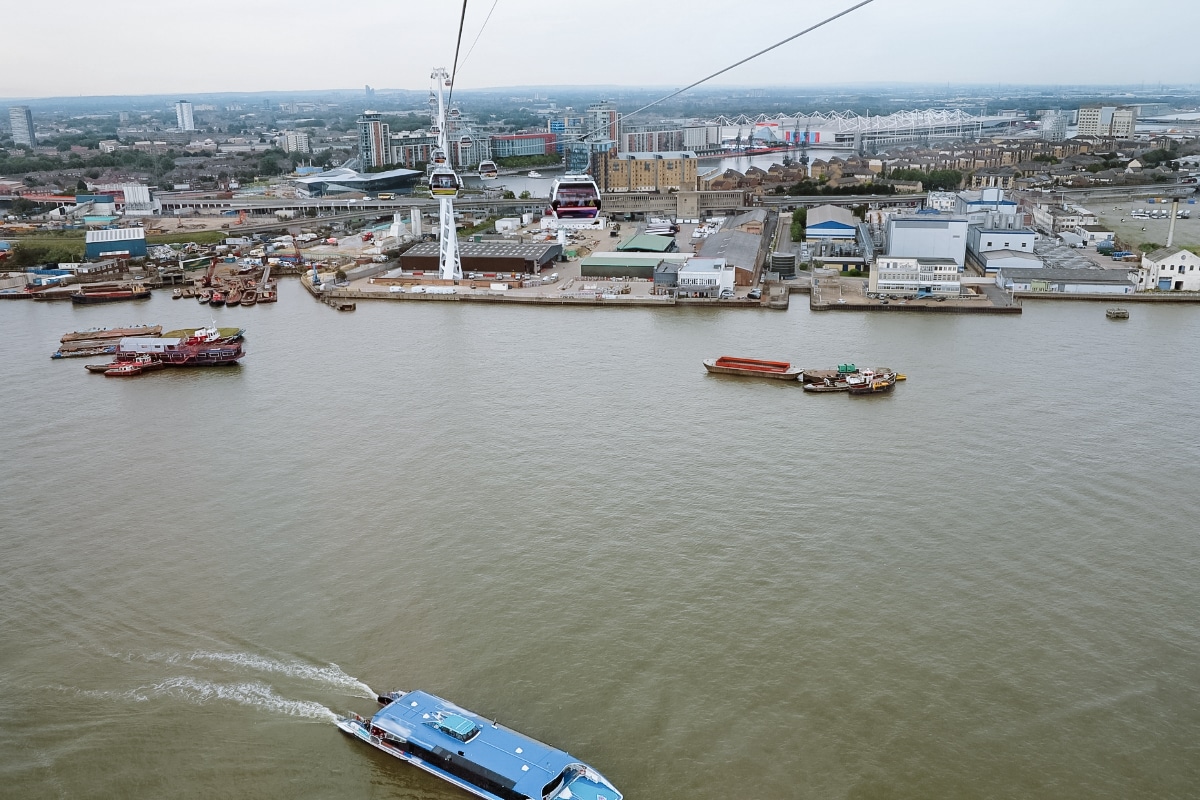
Map of London
Below you will find a map of London that you can download and print. You’ll also find maps at bus stops and tube stations, so it’s easy to find your way around London.
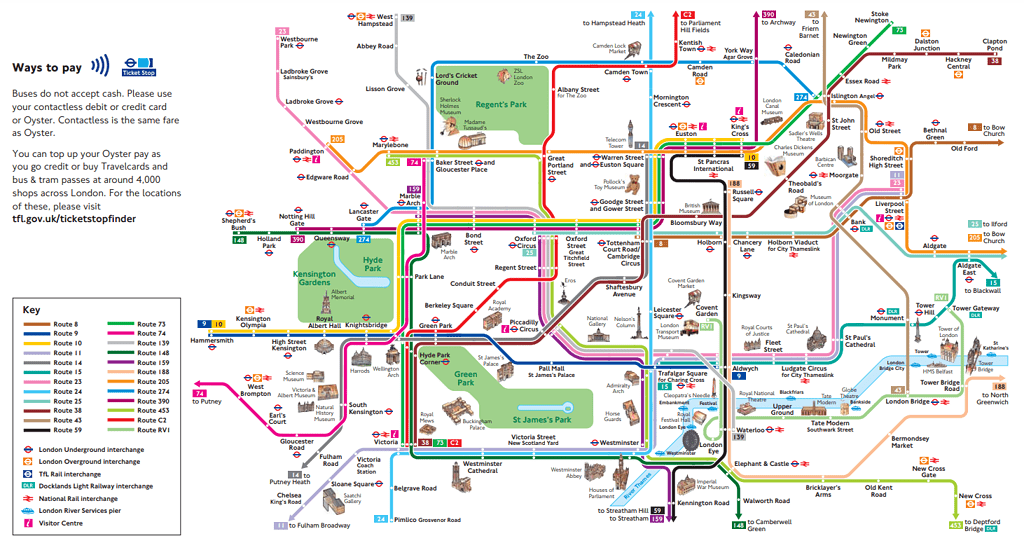
How does public transport work in London?
London Underground
The Tube in London works exactly the same as in other major cities – when you enter the Tube (look for the red circle with the blue strikethrough) you go through turnstiles where you scan your card (or other payment method you have chosen).
You then follow the signs that will take you to the metro line you need. Metro lines differ in colour and name – for example, the grey Jubilee line – but only the name is always given, not the colour designation. Metro stations are equipped with electronic boards with arrival times. There are also staff on hand to help you with anything you need.
When you exit the metro, you go through the turnstiles again, where you have to insert your card to deduct the correct amount (even if the turnstiles are open).
London Overground, DLR and National Rail also operate on the same principle.
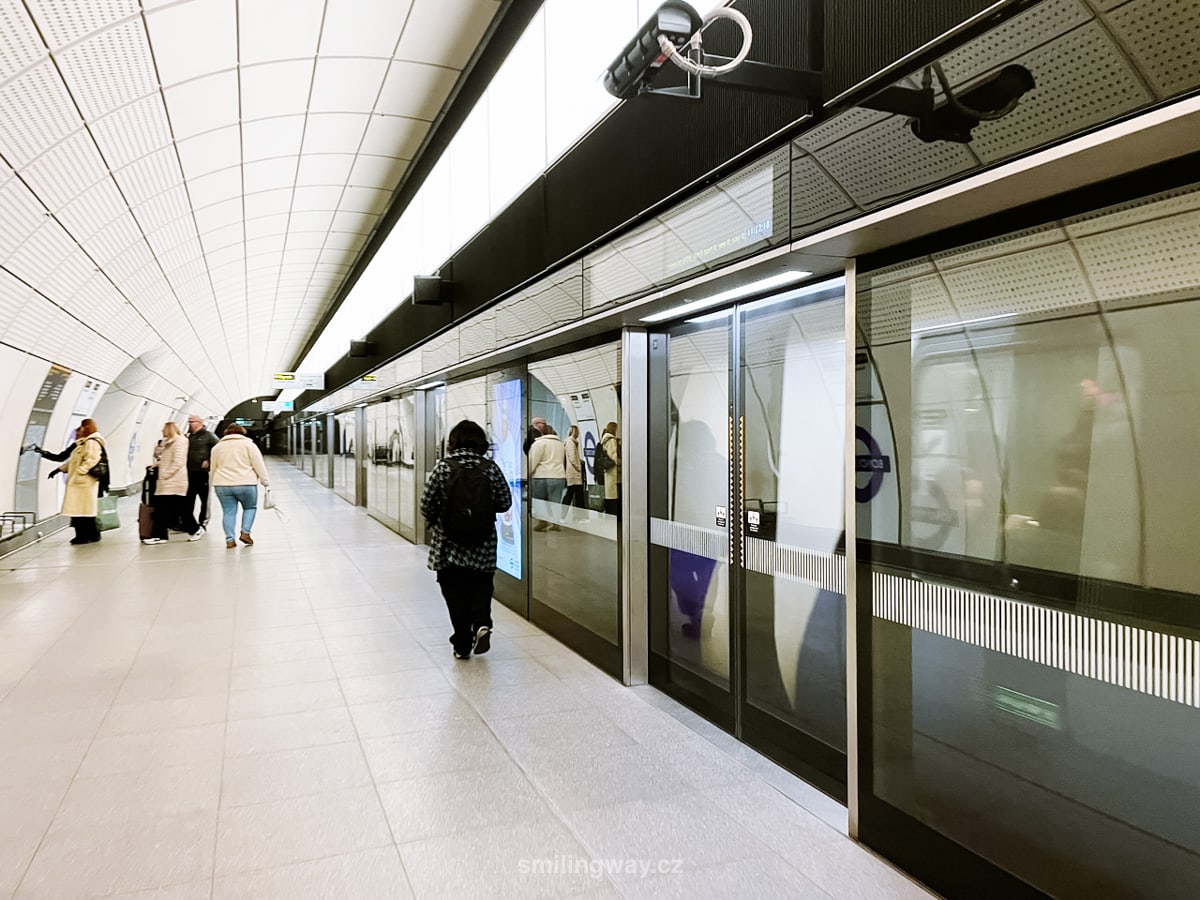
Buses
Red buses in London stop only on signal. You have to wave at the driver if you want the bus to stop.
Boarding the bus is through the front door, where there is a yellow reader on the driver’s cell door – here you insert your card to deduct the fare. From now on, you can travel unlimited on London buses for one hour for one amount.
If you want to enjoy the best view, take the stairs to the second floor. When you get off the bus, press the Stop button – the bus will then stop at the nearest stop.
As we drive on the left in the UK, even the bus stops are on the other side than we are used to.
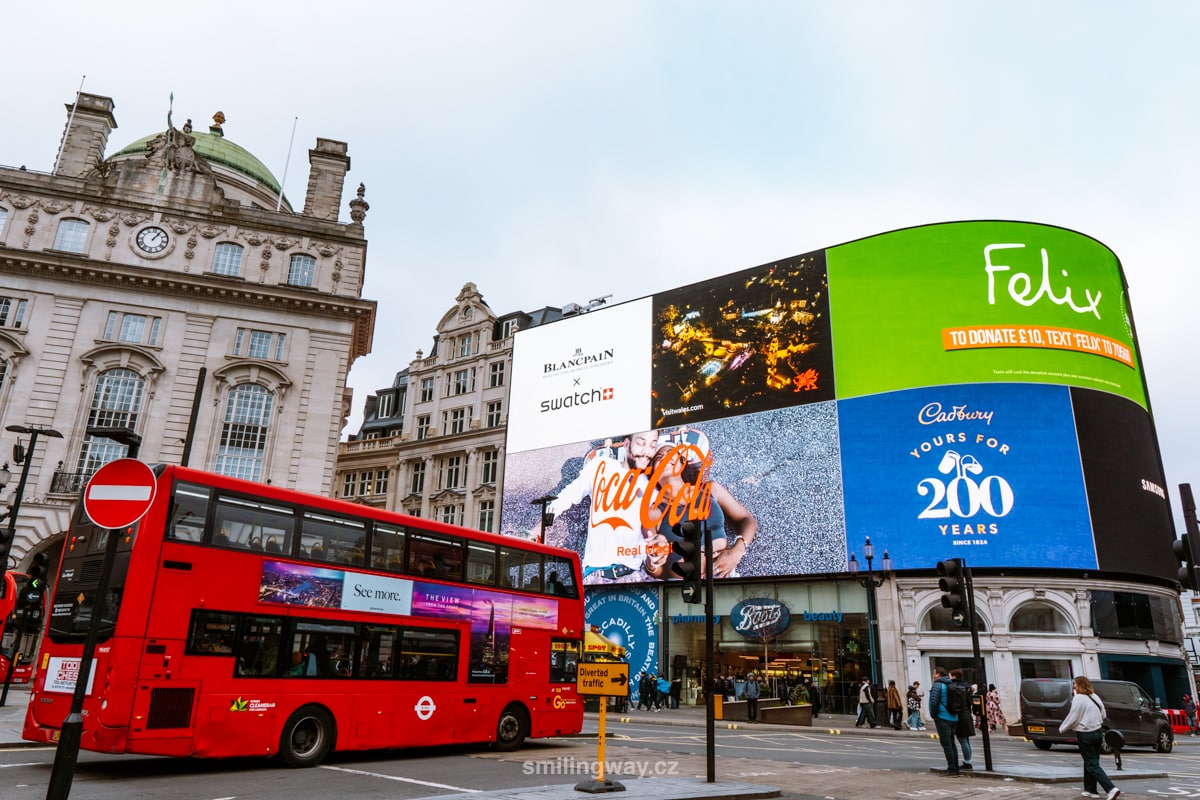
How do I pay for transport in London?
London’s public transport is of a high quality and the price goes hand in hand with it. Fortunately, there are several ways to avoid spending more than you have to on transport in London.
The most expensive option is classic paper tickets (£6.70 in 2023). In this day and age of credit cards, paper tickets are a relic and I personally would avoid them.
This filters out the two main options for paying for public transport in London:
- Get an Oyster card
- Pay with your own contactless payment card
London is divided into several zones for transport purposes. The fares vary according to this. Central London itself is in Zone 1, with Nothing Hill, Canary Wharf and Camden Market in Zone 2.
☞ Whether you plan to pay by Oyster card or contactless card, you can use both options to pay on buses, trams, Tube, DLR, National Rail, London Overground, river buses and the IFS Cable Car.
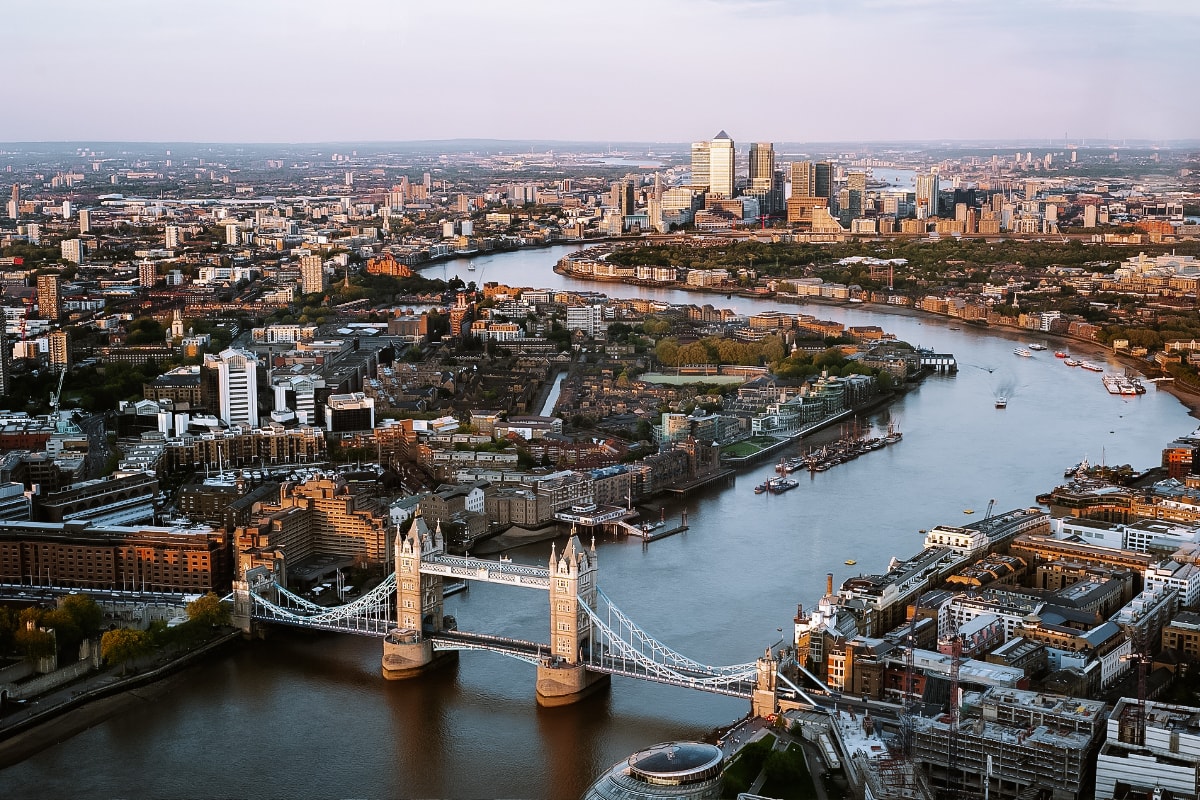
Transport in London: OYSTER CARD
Oyster card is a smart smart chip card that allows you to quickly and easily pay for bus, tube, tram, DLR, London Overground, TfL Rail, River Bus and national rail services in London and some outside London.
By using an Oyster card, you only pay the fare you actually travelled (as opposed to paper tickets).
How does the Oyster card work?
- You put money on the card, which you then use to pay for individual rides.
- When boarding and alighting, you attach your card to the yellow machine. If you forget to attach your card when you get off the train, you will be charged the full fare (as with paper tickets). On buses and trams, you only need to swipe your card when you board – here, a fixed amount is always deducted.
What is the price of the London Underground and buses on the Oyster card?
The fare is based on the time of day, day of the week and direction of travel. You can calculate the price of your journey in advance directly on the London Public Transport website. For short rides in the centre you will pay about £2.80.
☞ You only pay fares up to a certain amount, above which you travel for free that day. These limits vary depending on how many zones you’re travelling through and whether you’re travelling at peak times – find the limits for tube and train travel in London. Limits vary depending on whether you are travelling by metro or bus. Limits apply to both Oyster card and contactless card payments.
For buses and trams, the ride will always cost the same – £1.75. From the time you pay, you can travel for one hour unlimited on London buses. The maximum daily limit is for buses and trams £5.25, i.e. 3 rides. Once this limit is exceeded, you ride buses and trams for free on that day.
The limits do not apply to Thames Clippers River Bus services (Uber Boat).
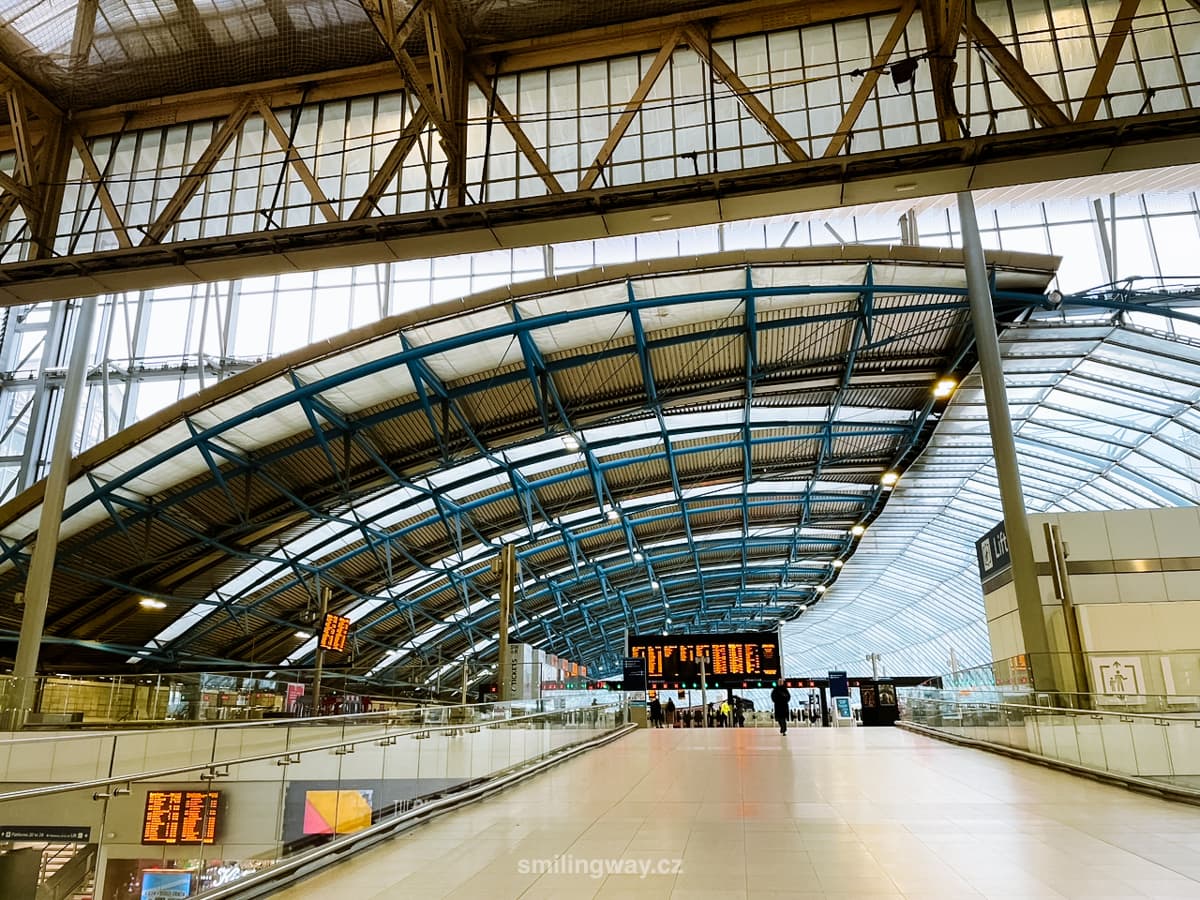
London Underground or bus?
It would seem that buses and trams are the most cost-effective option, based on the fares. In terms of price, yes, but in terms of time they will take a lot more than a fast and affordable subway.
Example: from Paddington Station to Victoria Station, pay on the tube ££2.80 and take 14 minutes. By bus, you only pay £1.75, but it’s a half-hour ride. For longer distances, we are talking about much bigger differences.
To calculate the fastest route, I recommend using Google maps, Citymapper or the London tfl website.
How much does an Oyster Card cost?
You will pay a one-off fee of £5 for the Oyster Card. It is irreversible, but if you use public transport, it will soon pay you back.
Multiple people cannot travel on one Oyster Card at the same time, i.e. If you are travelling with a partner, for example, you will each need your own card. However, you can subsequently lend the card to someone else as it is not in your name.
If you do not use the total amount you have pre-charged, you can withdraw the remaining money at the visitor centre. The amount to £ 10 can also be withdrawn from machines on the metro.
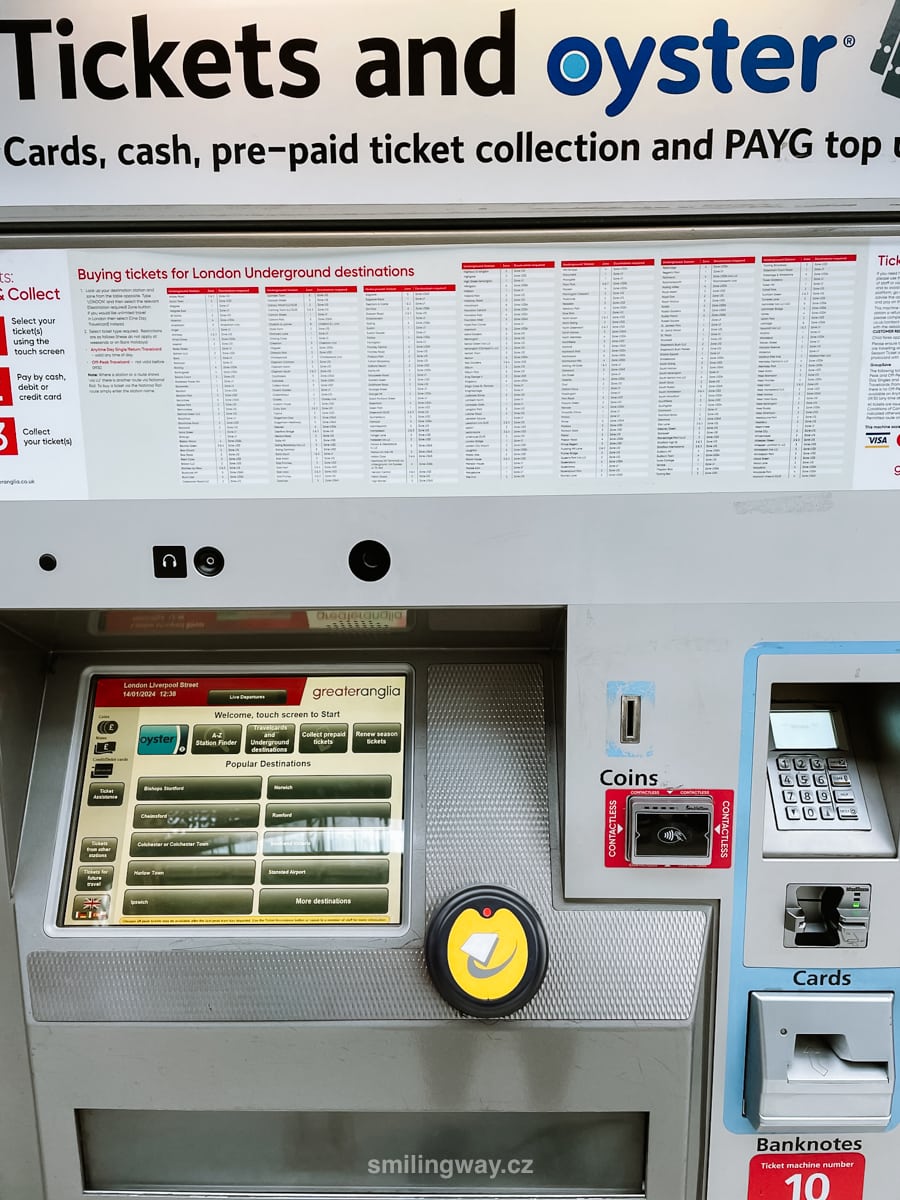
How much money to deposit on the Oyster Card?
It is recommended £ 15 for 2 days and £ 30 for 4 days. It’s better to put less in, because you can always top up your card at a machine in the metro.
Where to buy an Oyster Card?
The card can be bought as commonly as paper tickets at newsstands, metro machines or directly at airports.
Transport in London: PAY BY CARD
A contactless card is the easiest way to pay for transport in London.
How does contactless card payment work?
The payment principle is the same as for the Oyster Card. The card is to be attached to the turnstile when you board and alight (in the case of buses and trams, only when you board). You can also pay with Apple Pay, Google Pay, Apple Watch, etc. – it’s just important to always follow the same payment method when travelling so that the correct amount is deducted.
As with the Oyster card, only one person can travel on one contactless card.
What is the cost of London Underground and buses with a contactless card?
The fare will cost the same amount as with the Oyster Card, i.e. you’ll save significantly on paper tickets. Tickets for the London Double Decker or tram will set you back £1,75, max. at £5.25/day.
On the London Underground and other public transport, the price depends on how many zones you travel in – again, there is a cap above which you ride for free.
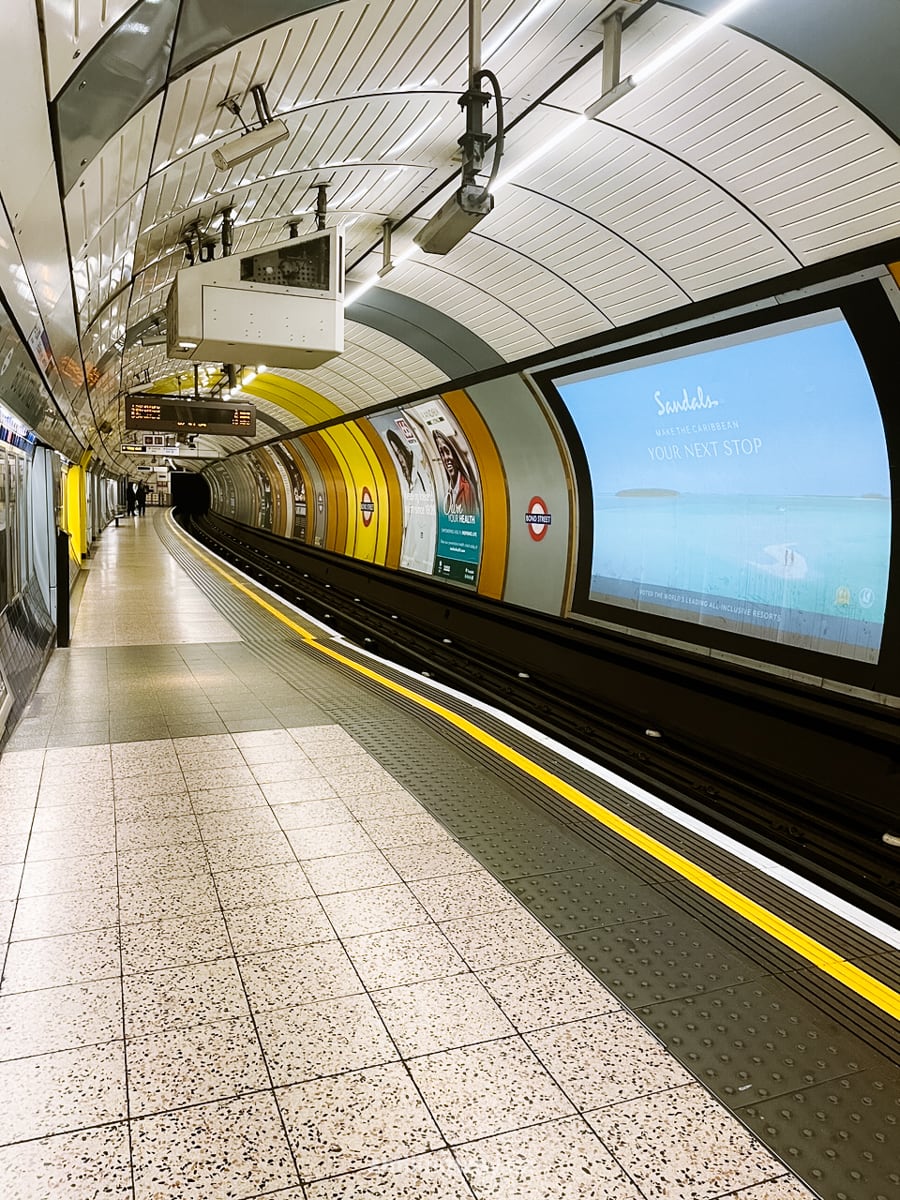
Mobile applications
How to get around London easily and keep your public transport bill under control? Download one of the apps:
- TfL Oyster and contactless app – use the app to find out how much money you have left on your Oyster card or how much you’ve been charged when you pay with a contactless card.
- London Bus & TfL Journey Planner – Probus – this app helps you find all the bus routes, stops and times. You can plan your route around London.
- London Tube Map – an app to help you plan your journey around London. It includes the Tube, DLR, suburban rail, TfL Rail and trams.
Transport in London with children
If you have your Oyster card as an adult, pay with a contactless card or have a paper ticket, up to 4 children under 11 can travel with you for free. Free travel includes all major modes of transport – metro, buses, trams and trains.
For children aged 11-15, a discount can be set up on the Oyster card so they can travel for half price for the next 14 days. You buy a regular Oyster card and ask staff to apply the child discount to your card.
☞ Read more in our guide to London with kids.
Transport in London: TRAVELCARD
Travelcard is a special card for tourists. It gives you unlimited travel in London in as many zones as you choose when you buy your Travelcard.
The downside is the price – it usually works out worse than if you pay with your contactless card. You can see the comparison here.
Rent a bike in London
London by bike is a great way to see more in less time. If you’re scared of the roads, you can take a ride in Hyde Park like we did.
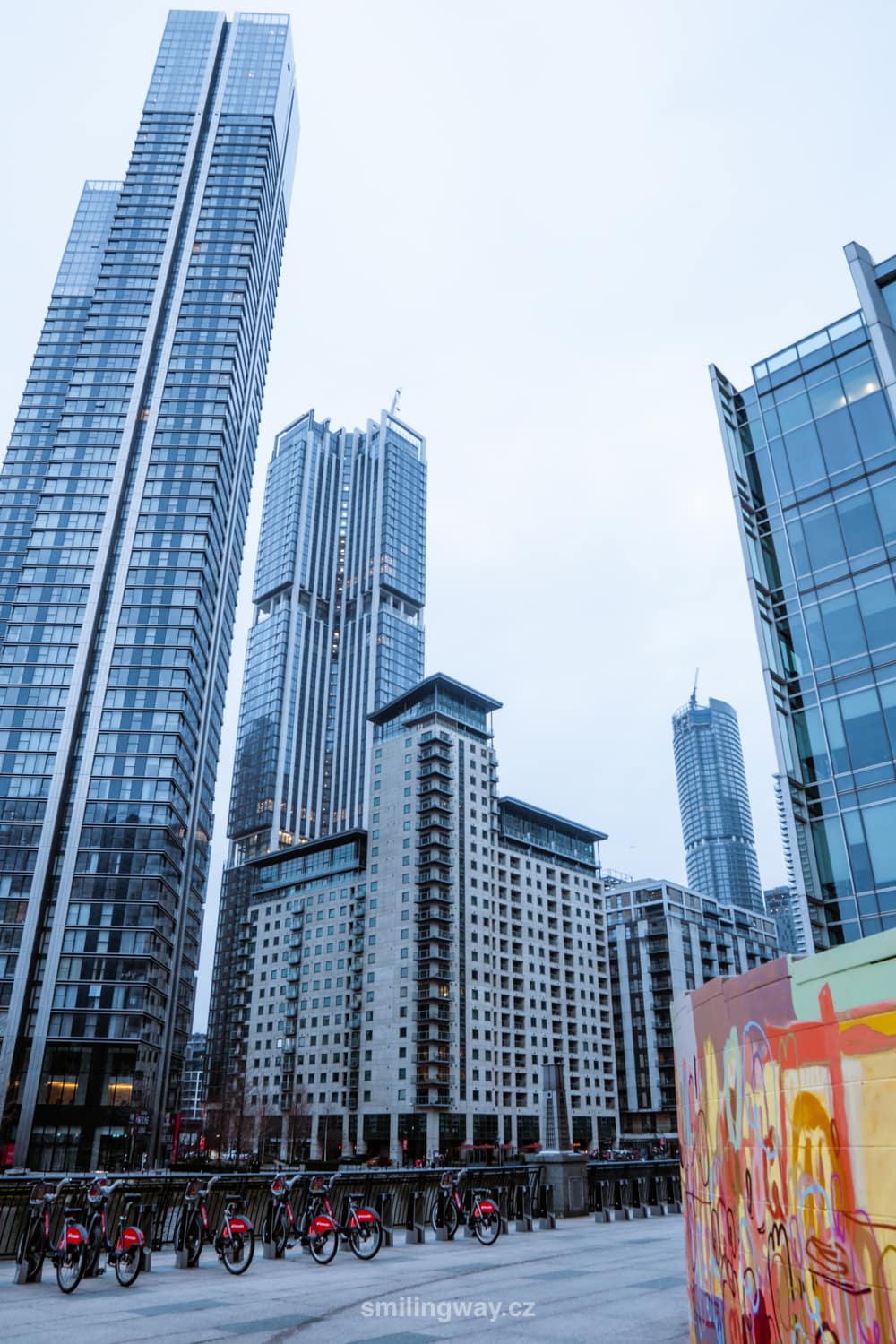
How does bike hire work in London?
Renting a bike in London is easy. You download the app, select your bike and enter the code from the app into the dock where the bike is parked.
If you don’t have the app, you enter the bike rental in the machine, pay with your credit card and get a code to unlock the bike. You can rent up to 4 bikes at a time, but you always need to generate a new code.
You can return the bike to any station – as soon as the green light comes on when you return it, everything is fine.
If it’s fully booked, you can enter on the app or terminal that the docks are full and get an extra 15 minutes to get to another station.
How much does it cost to rent a bike in London?
In 30 minutes of cycling in London, she turned on £1.65 . For electric bikes, the rate is £ 3.30 per 30 minutes.
Map of London
To help you plan your trip to London, we’ve created a map with tips on sights, attractions and accommodation in London, where to eat and where the airport and mainline stations are.
HOW TO USE THIS MAP: Above you will find a detailed map for London. Click at the top left of the map to see separate layers with highlighted locations. You can hide and show the different layers or click on the icons on the map to see the names of the places I mention in the London guide (transport, accommodation, sights, places to eat). If you want to save the map, star it. For a larger version, click on the icon in the upper right corner.
Plan your trip quickly and easily. If you buy something through our links, we get a small commission. You pay nothing extra. Thank you!
These were our handy tips on how to get from the airport to London and how to use London’s public transport and underground. Do you have a question? We’ll be happy to answer it in the comments below. Have a safe journey!
More information about London
THINGS TO DO IN LONDON: Here’s a list of the best places to visit in London (including handy information on admission fees and opening times).
We’ve created an itinerary for 3 days in London and if you’re even more pressed for time, take a look at the 1 day London itinerary.
London is a great place for the whole family. Read our tips on things do in London with kids (+ more practical information).
LONDON TRAVEL GUIDE: In the article you can find out all about transport in London (airport, public transport, underground, bicycle). Read about accommodation, prices, food and safety in our London travel guide. Tips on the best hotels in London will help you make your accommodation choices easier.
Here are 7 tips on how to save in London. The London Pass is a popular way to save money in London – find out more about London Pass.
GREAT BRITAIN: Find tips on what to see and do in England in our list of the most beautiful places in England. Or head north to Edinburgh or visit beautiful Scotland.
London Transport FAQs
There are several airports around London. Each is operated by a different airline. In this article, we’ll take each airport in turn, including the easiest way to get from the airport to central London.
Transport in London is extensive and includes the Tube, buses, trams, DLR, London Overground, National Rail, river buses and cable cars. As a tourist, you will most often use the metro and buses, which are easy to use and run every few minutes. In this article you will find a detailed guide to transport in London.
Pay as you go – this is a payment system where you only pay for what you actually drive. With your Oyster card or your contactless card, which you just need to attach to the turnstile on the metro, bus or train. See the article for full details, including how to rent a bike in London.
